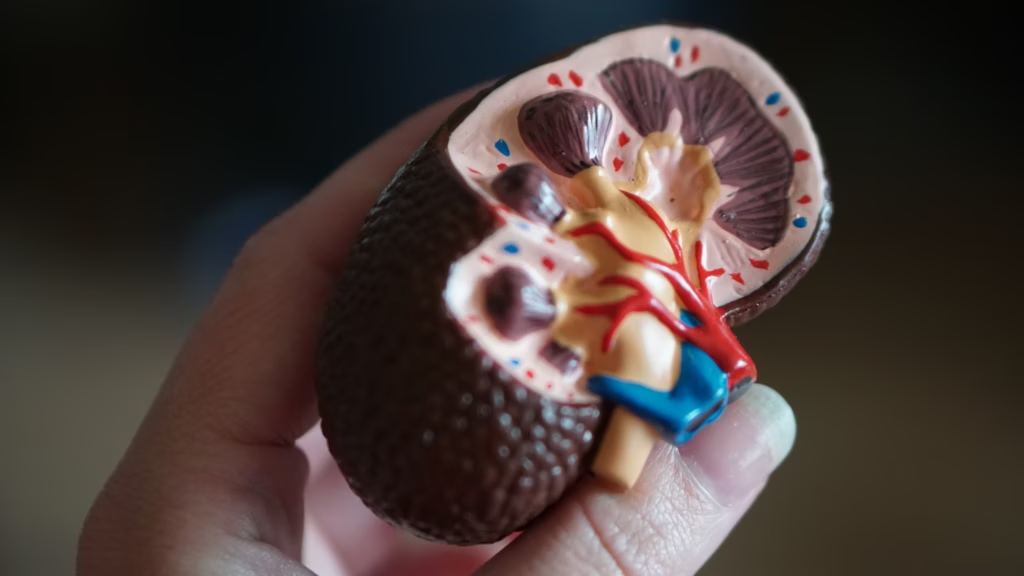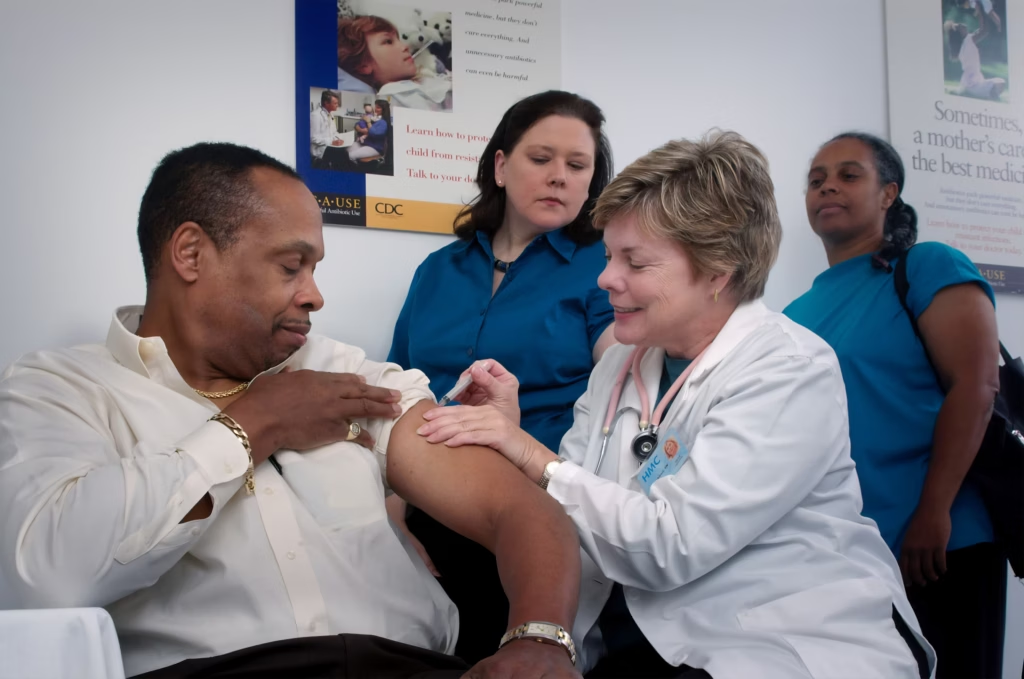News Team member Stephanie Oehler describes how the online "trad-wife" aesthetic fuels the flames of the anti-vaccination movement during the second-largest measles outbreak of the 21st century.
How Local Students and Experts Are Fighting Kidney Disease
The many minds behind improving kidney disease awareness and outcomes in Georgia.
By Manju Karthikeyan
The South faces consistently worse healthcare disparities compared to the rest of the United States. Southerners experience higher rates of diabetes, obesity, infant mortality, cancer, heart disease, and overall worse health outcomes. Many researchers trace these disparities back to the Civil War — creating a never-ending cycle of economic despair, a legacy of social upheaval, and an exacerbated healthcare system altogether. This gave rise to the Stroke Belt in the 1940s, a region along the Southeast home to the highest rates of stroke mortality in the United States.
Today, we are seeing a new addition to this long list of morbidities disproportionately affecting the South. Kidney disease is now a silent killer as the ninth leading cause of death in the United States, intertwined with existing concerns about diabetes and high blood pressure complications. In Georgia alone, 1.2 million adults have chronic kidney disease, but only about 150,000 are aware that they have it. This makes studying the social determinants of health, and creating advocacy efforts and clinical initiatives, for Georgians with kidney disease more important than ever.

The Power of Student-Led Initiatives for Kidney Health Advocacy
Researchers emphasize the importance of community-engaged approaches when addressing kidney and transplant inequities, with free community kidney screening initiatives broadening access to care for marginalized groups. The Kidney Disease Screening and Awareness Program, or KDSAP, works to fill this gap and is at the forefront of providing kidney health awareness and prevention measures across the country.
Darline Martinez, an Emory University senior studying anthropology and human biology, assists with this student-led organization’s mission as the community outreach representative for Emory’s KDSAP chapter. She works alongside Dr. Jason Cobb, associate professor of renal medicine and on-site nephrologist at Emory, to organize two to three screening events each year, monitoring for elevated glucose, blood pressure, and body mass index.
“These initiatives bridge gaps for people of color who don’t have adequate access to kidney health measures,” says Martinez. “Before even getting to kidney diseases and needing kidney health resources, bridging these gaps and focusing on prevention is just as important.”
Other KDSAP prevention initiatives include awareness events with Emory’s Wonderful Wednesday and a lecture series on kidney-healthy foods. KDSAP also assists with screenings at churches, shelters for the unhoused, and homes for the elderly– working to prevent Atlanta’s most vulnerable from needing kidney transplants.
Those already struggling with kidney disease can feel the love, too. Emory students make greeting cards for dialysis patients in addition to KDSAP-sanctioned prevention efforts. This love for community has manifested into multiple KDSAP chapters across the United States, with more than 25 chapters established to date. “It has been wonderful to see the impact Emory is making in our local community, and how the organization as a whole is growing,” Martinez says.
KDSAP at Emory hopes to widen their impact by expanding on initiatives within Georgia — collaborating with other student organizations like Slow Food Emory and branching out to other KDSAP chapters at Georgia Tech and GSU. “KDSAP is also excited to partner with local high schools to encourage students interested in pre-health tracks,” says Martinez. “It takes a village to invoke meaningful change.”
Outside of KDSAP, Martinez encourages routine follow-ups with nephrologists beyond annual screenings, more initiatives that address stigmas around physical exams in the South, greater representation for minoritized patients, and more accessible science communication about clinical trials and kidney disease symptoms. Common symptoms of kidney disease include trouble concentrating and sleeping, dry and itchy skin, urinating more frequently, having bloody or foamy urine, puffy eyes, swollen ankles and feet, having a poor appetite, and experiencing persistent muscle cramps.

Combatting Kidney Disease in Georgia and Around the World Through a Physician’s Lens
Understanding kidney disease disparities from a professional’s perspective is critical to reducing the gaps in care. “Kidney disease is also an international problem,” said Dr. Ibrionke Apata, an Associate Professor at the Emory School of Medicine and nephrologist at Grady Memorial Hospital.
Dr. Apata received a Cornell Travel Award to Nigeria after participating in infectious disease research and completing her residency in internal medicine, during which she treated many bloodstream infections from a lack of dialysis care. She even recalls having a patient with sickle cell disease who passed away from not having out-of-pocket payments for dialysis treatment. Only two million people receive dialysis care globally, which is just 10% of those who need treatment.
Her experiences both domestically and abroad motivated Dr. Apata to work with public health stakeholders further to help decrease infection rates for dialysis with the American Society of Nephrology. “From 2014 to 2020, we had about 600,000 patients on dialysis, and we saw a 30% reduction in bloodstream infections across the nation,” she says.
Still, there is much more work to be done.
“The incidence and prevalence of end-stage renal disease in the Southeast is higher than the national average,” Apata says. She mentions that this has similar trends to diabetes, which is the top cause of kidney disease in the United States. Even within Georgia, there is variability across the state. Lack of access isn’t just a rural problem, as some urban areas have dialysis units but low health literacy and higher rates of poverty, leading to low uptake. Health literacy is a key predictor for a chronic kidney disease patient’s quality of life, so the social determinants of kidney disease must continue to be emphasized.
“Where you live and where you learn certainly affect health outcomes. When you add the nature of housing, food insecurity, and unemployment, it is challenging for someone to engage with their kidney disease,” Apata says. The patient’s kidney disease is advanced by the time noticeable symptoms, such as shortness of breath and hypoglycemia, appear.
Dr. Apata applauds the work of student organizations such as KDSAP and other clinical research efforts at Emory that are working to combat kidney disease. Based on her experience, addressing patient awareness and improving the current medical system requires passion, flexibility, constant consideration of the patient’s perspective, and collaboration across multiple specialties and stakeholders. “Starting with something small, then thinking of the big picture on an international scale, can go a long way”, she says.
To learn more about KDSAP and its initiatives at Emory and beyond, follow @emorykdsap and @kdsapnational.
